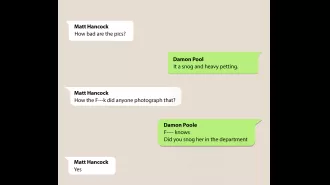An old London Tube ticket highlights the significant increase in fares over the years.
London travel used to be inexpensive.
May 16th 2024.

In the 1980s, a Tube day travel card was significantly cheaper than it is today. A recent discovery of an old London travel card has revealed just how much the cost of Tube travel has increased over the years. Despite the sometimes tumultuous relationship between Londoners and the Tube, it has become an integral part of life in the capital since it was first introduced over 160 years ago. And while ticket price increases on the Transport for London network are a regular occurrence, there have been instances of fare freezes, such as this year.
The Oyster card was introduced in 2003, followed by the introduction of contactless payment on the Tube in 2014. But a Londoner recently stumbled upon a rare find - a 1988 London Underground travel card - while going through their parents' old books. The discovery sparked nostalgia and memories for many, as it showed how much prices have ballooned since then. In 1988, an off-peak travel card for zones 1 to 3 cost a mere £2, which today would be equivalent to £5.36 due to inflation. In comparison, a one-day travel card for zones 1-6 today costs £15.90.
According to MyLondon, travel cards were first introduced on the London Underground and buses in 1983, with day tickets following suit the following year. A graphic showing the increase in prices for one-day travel cards in zones 1 to 4 since 2002 reveals the significant hike over the years. This has resulted in relief for Londoners when TfL announced a ticket price freeze in 2016. The freeze was extended until March 2025 by Mayor of London Sadiq Khan, who pledged to support Londoners with the cost of living crisis. However, this has not always been the case, as last year saw an average rise of 5.9% in fares.
The Tube has undergone modernization over the years, including the addition of the Elizabeth Line, better mobile phone signal, and even an off-peak Friday price trial announced by City Hall. In addition, passengers can expect to have mobile signal across most of the London Underground by the end of the year, much to the delight of frequent travelers. The Elizabeth Line, which connects Heathrow Airport with central London, launched in May 2022. With a network stretching 249 miles, the London Underground is full of secret passages, historical Grade II-listed stations, and even ghost platforms.
For those who ever feel like they are being watched while on the Tube, it could be because of the more than 15,500 CCTV cameras in the network. Travel influencer Dan Thomas even revealed a tour of the historic passages in Shepherd's Bush and Baker Street. And for those who want to put their knowledge to the test, here are some interesting facts about the London Underground: it was affectionately nicknamed the "Tube" due to the shape of its tunnels, it opened in 1863 and sees over 1.3 billion passengers annually, the busiest station is Waterloo with 23 escalators, and the Metropolitan Line can reach speeds of up to 62 mph.
The Oyster card was introduced in 2003, followed by the introduction of contactless payment on the Tube in 2014. But a Londoner recently stumbled upon a rare find - a 1988 London Underground travel card - while going through their parents' old books. The discovery sparked nostalgia and memories for many, as it showed how much prices have ballooned since then. In 1988, an off-peak travel card for zones 1 to 3 cost a mere £2, which today would be equivalent to £5.36 due to inflation. In comparison, a one-day travel card for zones 1-6 today costs £15.90.
According to MyLondon, travel cards were first introduced on the London Underground and buses in 1983, with day tickets following suit the following year. A graphic showing the increase in prices for one-day travel cards in zones 1 to 4 since 2002 reveals the significant hike over the years. This has resulted in relief for Londoners when TfL announced a ticket price freeze in 2016. The freeze was extended until March 2025 by Mayor of London Sadiq Khan, who pledged to support Londoners with the cost of living crisis. However, this has not always been the case, as last year saw an average rise of 5.9% in fares.
The Tube has undergone modernization over the years, including the addition of the Elizabeth Line, better mobile phone signal, and even an off-peak Friday price trial announced by City Hall. In addition, passengers can expect to have mobile signal across most of the London Underground by the end of the year, much to the delight of frequent travelers. The Elizabeth Line, which connects Heathrow Airport with central London, launched in May 2022. With a network stretching 249 miles, the London Underground is full of secret passages, historical Grade II-listed stations, and even ghost platforms.
For those who ever feel like they are being watched while on the Tube, it could be because of the more than 15,500 CCTV cameras in the network. Travel influencer Dan Thomas even revealed a tour of the historic passages in Shepherd's Bush and Baker Street. And for those who want to put their knowledge to the test, here are some interesting facts about the London Underground: it was affectionately nicknamed the "Tube" due to the shape of its tunnels, it opened in 1863 and sees over 1.3 billion passengers annually, the busiest station is Waterloo with 23 escalators, and the Metropolitan Line can reach speeds of up to 62 mph.
[This article has been trending online recently and has been generated with AI. Your feed is customized.]
[Generative AI is experimental.]
0
0
Submit Comment





